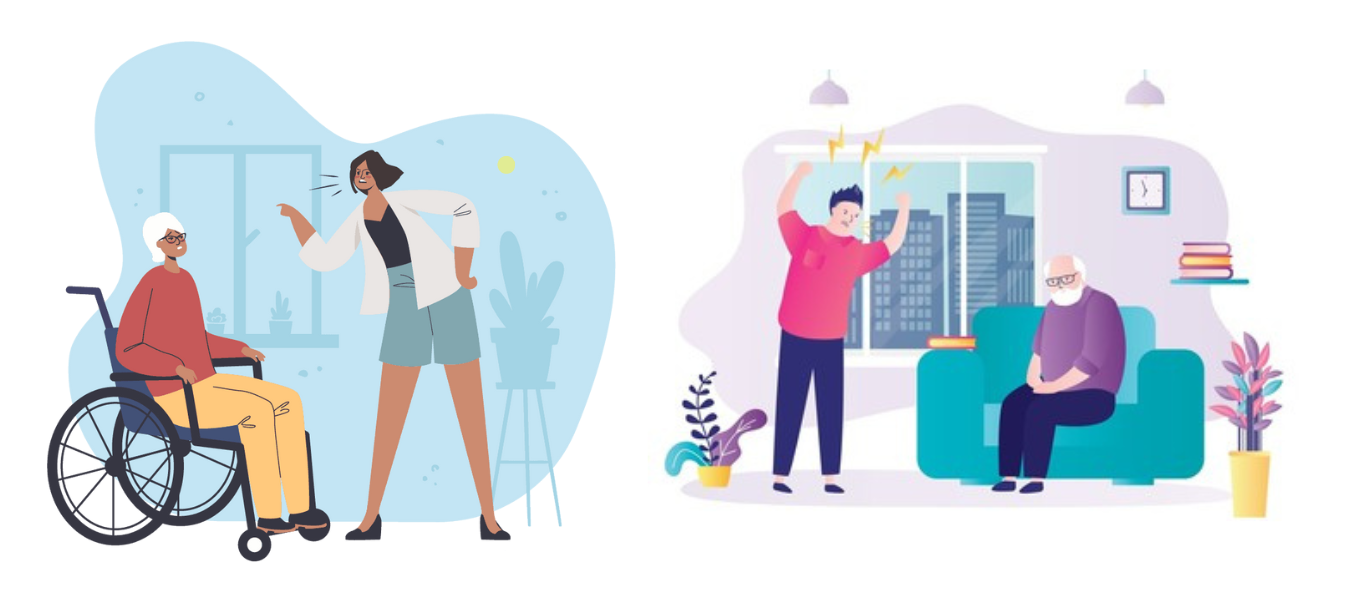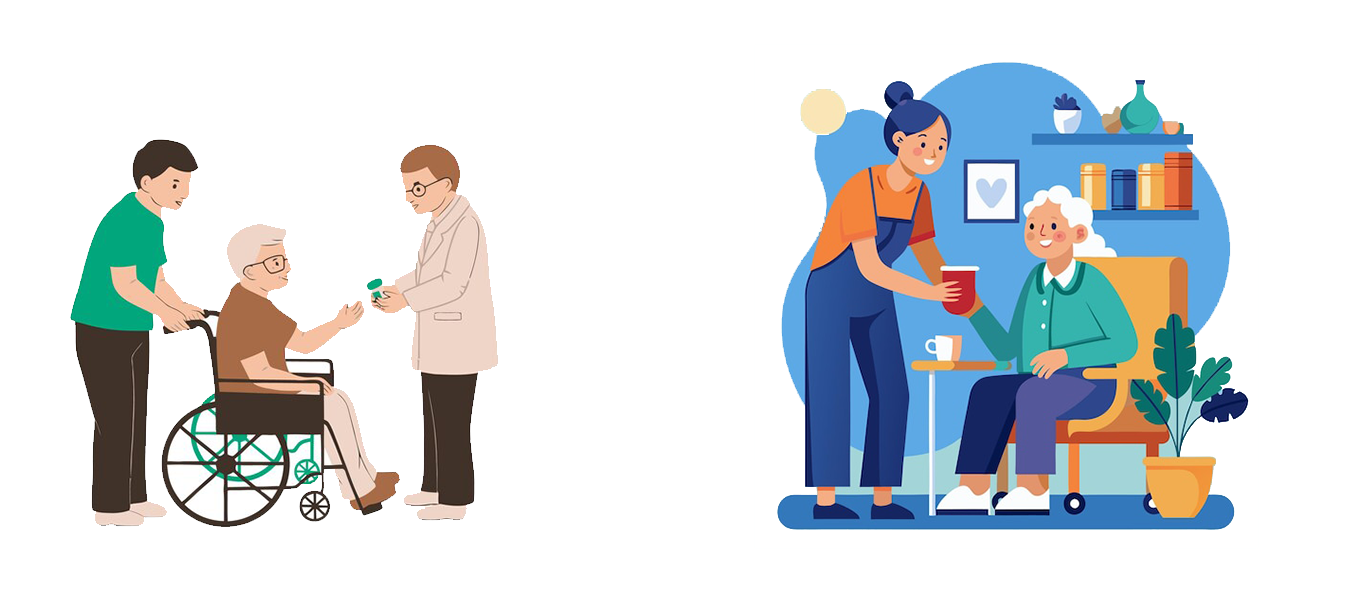What is behavioral health integration (BHI)?
BHI is widely accepted as the result of primary care (or other care settings) and behavioral health physicians and other clinicians, working together with patients and families, using a systematic approach to provide patientcentered care
Who is included in the term “older adults”?
When using the term “older adults,” it is referring to adults aged 65 and older.
Why is BHI relevant to the care of older adults?
Changes to physical health can be a normal part of aging, but this is not true of symptoms such as insomnia, low mood, increased suicidalthoughts, memory impairment, and increased substance use or misuse.
Factors such as ageism, stigma, and lack of identification lead to older adults being written off as having a natural reaction to illness or life changes instead of something that should be further investigated. This patient population also tends to keep their concerns to themselves and may be reluctant to seek help or may even self-identify their symptoms as a normal part of aging. Additionally, our healthcare system is already stretched to meet the need of this population. Not only are there already shortages of primary care physicians and psychiatrists, but also those physicians with specialization in caring for older adults— geriatricians and geriatric psychiatrists.3,4 Creating a treatment pathway (i.e., screening to treatment) for behavioural health concerns when caring for older adults in a primary care setting (both urban and rural) is of utmost importance and highlights the importance of integrated behavioural health care.
Key conditions and symptoms
- Depression and anxiety: Late-life depression is a major depressive episode that occurs in adults over 65 who have no prior history of a Major Depressive Disorder (MDD).MDD is often triggered by other chronic health issues, loneliness, and grief. Because older adults often have a range of other comorbidities, mental health conditions are not always the most obvious component to treat and can also be difficult to recognize. Older adults with MDD do not always present with typical symptoms of depression but are more likely to present instead with somatic symptoms, functional changes, and/or cognitive difficulties, leading to both underdiagnosis and under-treatment.
Anxiety disorders include Generalized Anxiety Disorder (GAD), Social Phobia, Specific phobias, Panic Disorder, Obsessive Compulsive Disorder (OCD), and Post Traumatic Stress Disorder (PTSD). They may be written off as a normal part of aging in older adults or can be mistaken for physical health conditions since they often manifest with symptoms of physical illness such as gastrointestinal or cardiac symptoms.
- Substance misuse and substance use disorders: Substance misuse and substance use disorders (SUDs) include drugs such as cocaine, heroin, marijuana, alcohol, prescription medications including opiates and benzodiazepines, over-the-counter (OTC) medications, and supplements. As we age, what medications and substances do to our bodies and how our bodies interact with medications and substances changes, making substance misuse very dangerous and potentially deadly for older adults even at small amounts. Chronic medical conditions and chronic prescription or OTC medication use provides an additional risk for those who use other substances.Substance misuse can impact how daily medications are able to treat chronic illnesses and can lead to increased adverse side effects such as hypotension and/or adverse events such as falls and increased ER visits.
- Cognitive changes, dementia and resulting neuropsychiatric symptoms: Many illnesses that impact the brain from a neurological standpoint additionally affect mood, behaviour, and can lead to other psychiatric symptoms including but not limited to insomnia, suicidal ideation, and psychosis. The most common neuropsychiatric disorder is dementia, with the most common dementia being Alzheimer’s dementia.It is important to differentiate dementia from other reversible causes of dementia and psychiatric conditions such as depression, acknowledging that subsequent symptoms seen in dementia often include depression, increasing substance use, worsening anxiety, suicidal ideation, and possibly psychosis.
- Screening and diagnosis considerations: Many older adults present with symptoms that may contribute to, be a sequelae of, or not even be related to a behavioural health condition. Because of the degree of overlapping and confounding factors in the care of older adults, it is crucial to assess for a variety of conditions including both behavioural health and physical illnesses.
It is important to note there are significant overlaps between risk factors and key symptoms for behavioural health conditions of older adults, necessitating consideration of multiple conditions co-occurring. Evidence-based screening tools can be sent ahead of time to be self-administered, completed in a waiting room, or administered by a medical assistant (MA).
Screening tools are just that—tools to assess for a variety of symptoms in a more targeted and efficient manner. They do not give a behavioral health diagnosis, as these conditions are clinical diagnoses that necessitate further questioning from a clinician as well as utilizing the information from the tool, patient interview, collateral information, mental status examination, other medical tests, and more. There are additional considerations that are particular to the older adult population, which may impact the scoring of a screening tool, and should be further assessed.
Case Study:

Treatment Consideration:
Behavioural health treatment of older adults is nuanced and requires a multimodal approach. There is no “one size fits all,” given the complexity of each individual. More mild to moderate cases of behavioural health conditions or symptoms can be treated in the primary care setting. If physician practices find themselves wishing they had a behavioural health specialist to refer or talk through cases with, this may be an indication that BHI would be helpful to implement. Some types of integrated care models are more proactive in monitoring high risk cases for further psychiatric consultation, such as how a behavioural health specialist reviews patients to refer to the consulting psychiatrist in the Collaborative Care model (CoCM). Regardless, a holistic approach to treatment of older adults is crucial, including but not limited to:
- Appropriate medication administration: Behavioral activation:In addition to confirming the name, dose, and frequency of prescription, OTC, and herbal supplements being taken, it is crucial to ask about how medications are managed:
- Are they all kept in their own pill bottles and stored on the kitchen counter?
- Are they put in a pill box by a person who has a mild cognitive impairment? • Do they utilize a pill box that a family member constructs but the patient takes the medications independently?
These are all crucial questions to assess if there is misuse of any medications or supplements. Many pharmacies will administer medications in bubble packaging, which can assist patients who take multiple medications to keep their medications sorted by time of day in which they take them.
- Behavioural Activation:Behavioural activation (BA) is a specific cognitive behavioural therapy (CBT) tool that can be used separate from a full course of CBT. Some people have difficulty doing the things they want to do during the day, i.e., exercising, going to the grocery store, cleaning their room, due to excessive worries and/or changes in mood. Behavioural activation is a way to reduce avoidance and understand that activities can be completed despite negative thoughts or moods.
- Healthy eating: Nutritional needs can change throughout the life spectrum. MyPlate discusses some of the unique nutritional needs of older adults such as which nutrients to focus on (Vitamin B12, calcium, vitamin D, potassium), drinking plenty of liquids, and how to get enough fiber.
- Neuromodulation such as electroconvulsive therapy (ECT):Severe cases of depression which can include catatonia or psychosis are an appropriate indication for neuromodulation, especially if an older adult is having severe suicidal ideation or lack of oral intake.40 Delusions that occur in MDD with older adults are typically somatically focused and may include thoughts that they are dying, their body is rotting, or that they have a severe physical illness. In such cases, neuromodulation such as ECT or transcranial magnetic stimulation (TMS) are appropriate, as is inpatient hospitalization.
- Outside referrals:Some practices may be integrated with more than just behavioral health, possibly including occupational therapy (OT), physical therapy (PT), speech language pathology (SLP), or services such as palliative care, pain management, or more specialized addiction medicine or psychiatry services. Behavioural health OTs can be especially helpful in working with patients on behavioural activation, coping skills, creating a daily schedule andstructure, and OT can be helpful in supporting a person in their ADLs. SLP can be beneficial in working with patients with cognitive concerns such as word finding difficulties. PT can be beneficial for strengthening to help reduce fall risk. If a patient has limited mobility, they may qualify for home health services with these services. While it is important to recognize that not all patients have the time, transportation, or mobility to get to additional appointments, it is helpful to consider outside referrals when appropriate.
- Physical activity: It is recommends that older adults get at least 150 minutes per week of moderate intensity aerobic activity, which is anything that increases heart rate, at least two days a week of muscle strengthening activity, and balance activities to reduce fall risk.
- Psychopharmacology: Given the changes in pharmacokinetics and pharmacodynamics as we age, prescribing psychoactive medications for older adults requires additional considerations and more intentionality
- Psychotherapy:Psychotherapy can be a first-line treatment in mild to moderate behavioural health conditions, which may include different modalities including but not limitedto cognitive behavioral therapy (CBT), interpersonal therapy (IPT), and acceptance and commitment therapy (ACT).43 Any clinician can engage a patient in supportive psychotherapy, which includes active listening, empathy, positive reinforcement, and relies heavily on a good rapport with the patient. In many behavioural conditions, psychotherapy is used in conjunction with medication.
- Relaxation, meditation, mindfulness:Relaxation skills such as deep breathing or grounding exercises are an easy and useful way to help with anxiety reduction.44 Guided meditation, mindfulness exercises or relaxation techniques can be found through certain phone apps, online (e.g., YouTube), or practiced in therapy. These are useful coping skills for the patient to use to refocus on their body and out of their thoughts, worries, or mood.
- Safety planning:Safety planning is an important treatment approach after assessing for suicide risk using the Columbia Suicide Severity Rating Scale. A safety plan helps to identify the warning signs, create a list of coping strategies, distractions, supports, professional supports, and identify how to make the environment safer. Resources such as My Safety Plan support downloading or creating a safety plan template, which can then be printed out and made easily accessible for a patient and their family/caregivers.
- Sleep:It is a myth that adults need less sleep as they age. While the need for sleep remains the same, older people do not sleep as deeply as younger people, which may impact their experience with sleep. Substance misuse (tobacco, caffeine, alcohol), poor sleep habits, illness (heart and lung disease, depression and dementia, chronic pain), and inactivity as the primary drivers of poor sleep.
- Social interaction and structure:Retirement can cause a loss of structure or daily schedule to one’s day, which can lead to changes in sleep patterns, losing one’s identity, having excess free time, and more. Creating a daily schedule with activities can ensure that the patient is getting social interaction and staying engaged, which can lower risk for depression and possibly delay onset of dementia.49 Part of maintaining brain health is to continue mentally challenging activities such as strategy games, learning a new skill, taking a class, or spending time volunteering.
- Vitamins: As we age, the way the body absorbs nutrients from food changes. Dietary supplements such as vitamins may be indicated. It’s important to ask patients about vitamins when conducting a medication reconciliation. Some vitamin deficiencies may impact behavioural health symptoms, such as Vitamin D with mood. Vitamin B12 can impact gait stability and contribute to fall risk.







